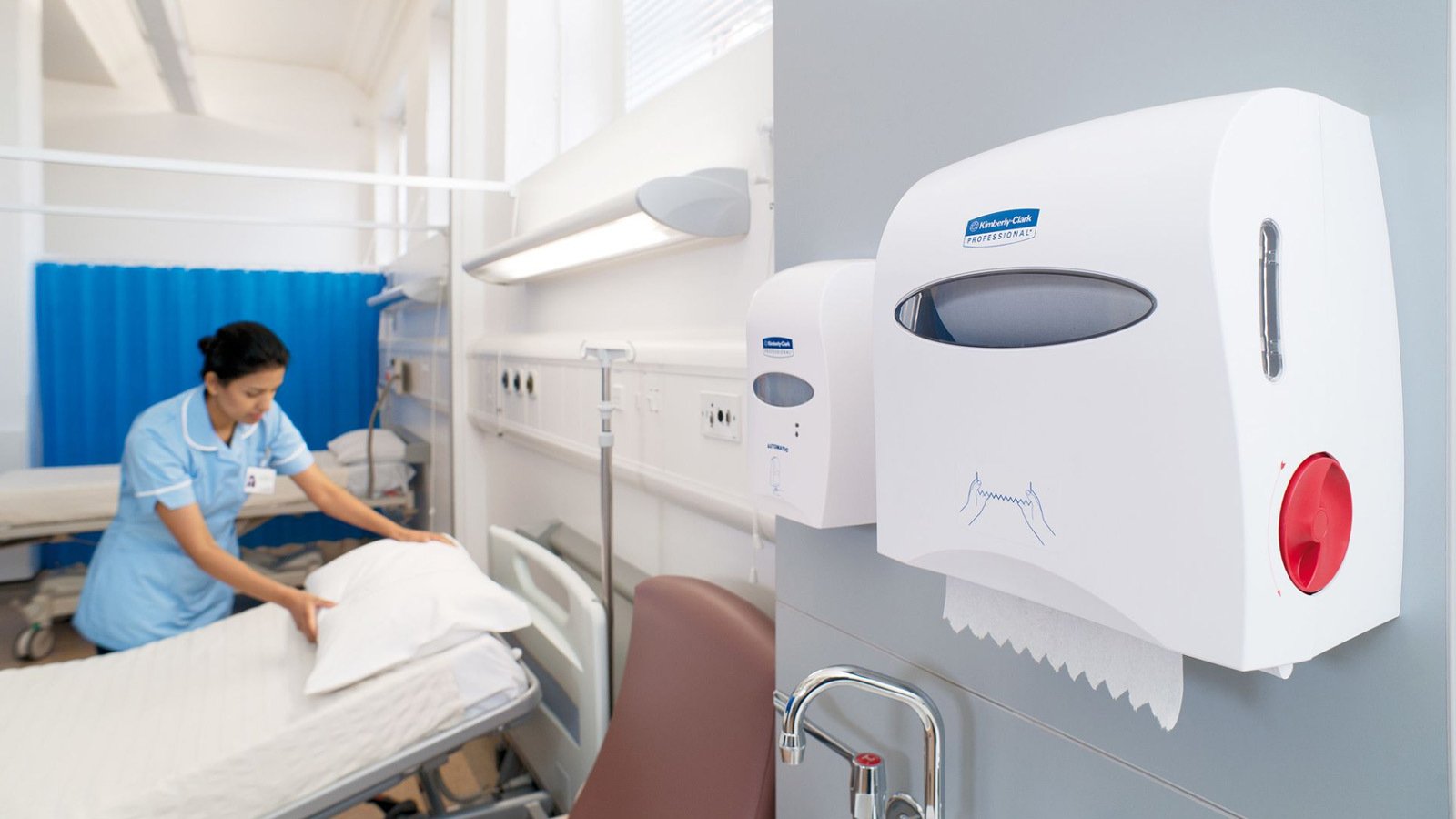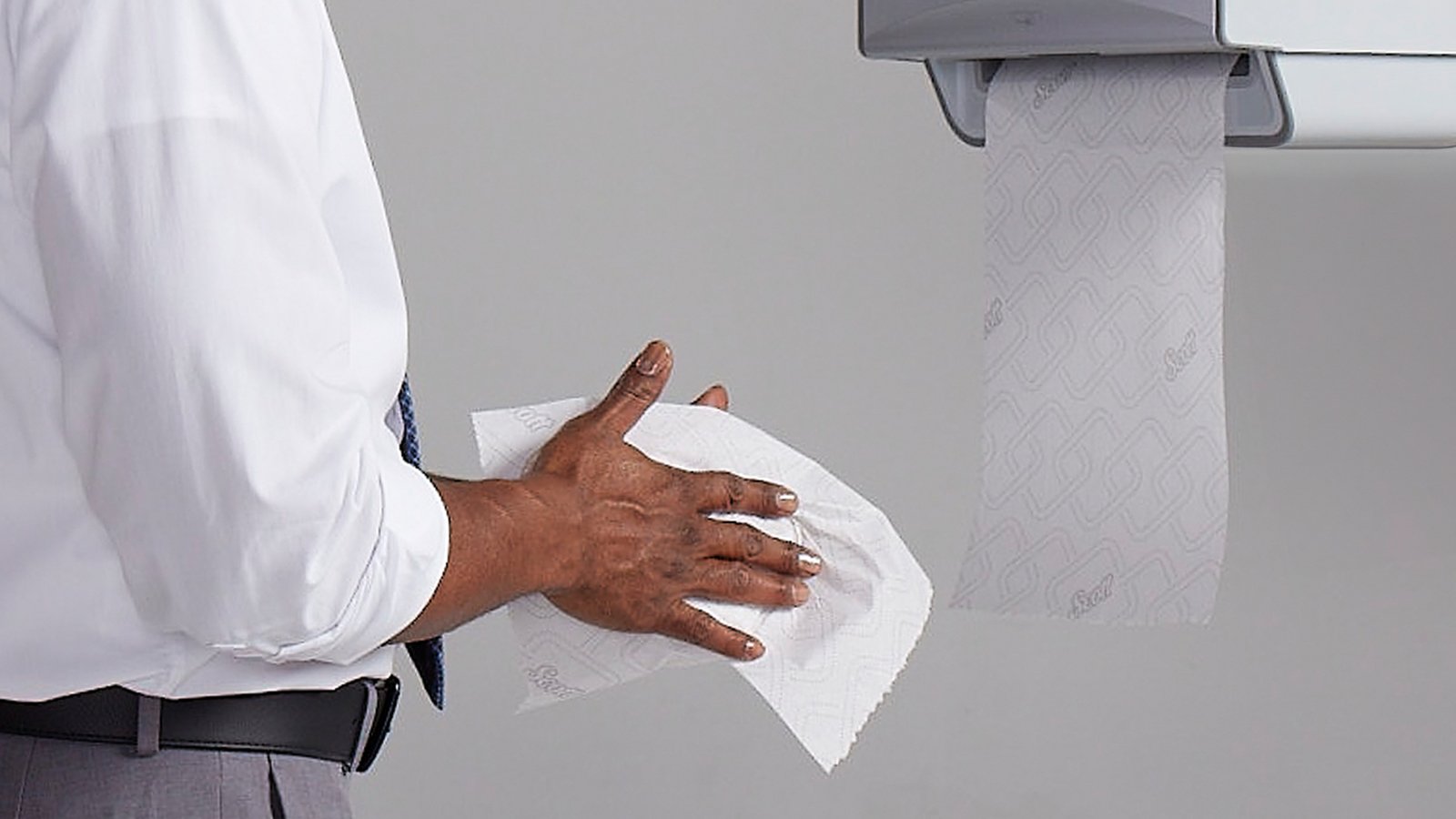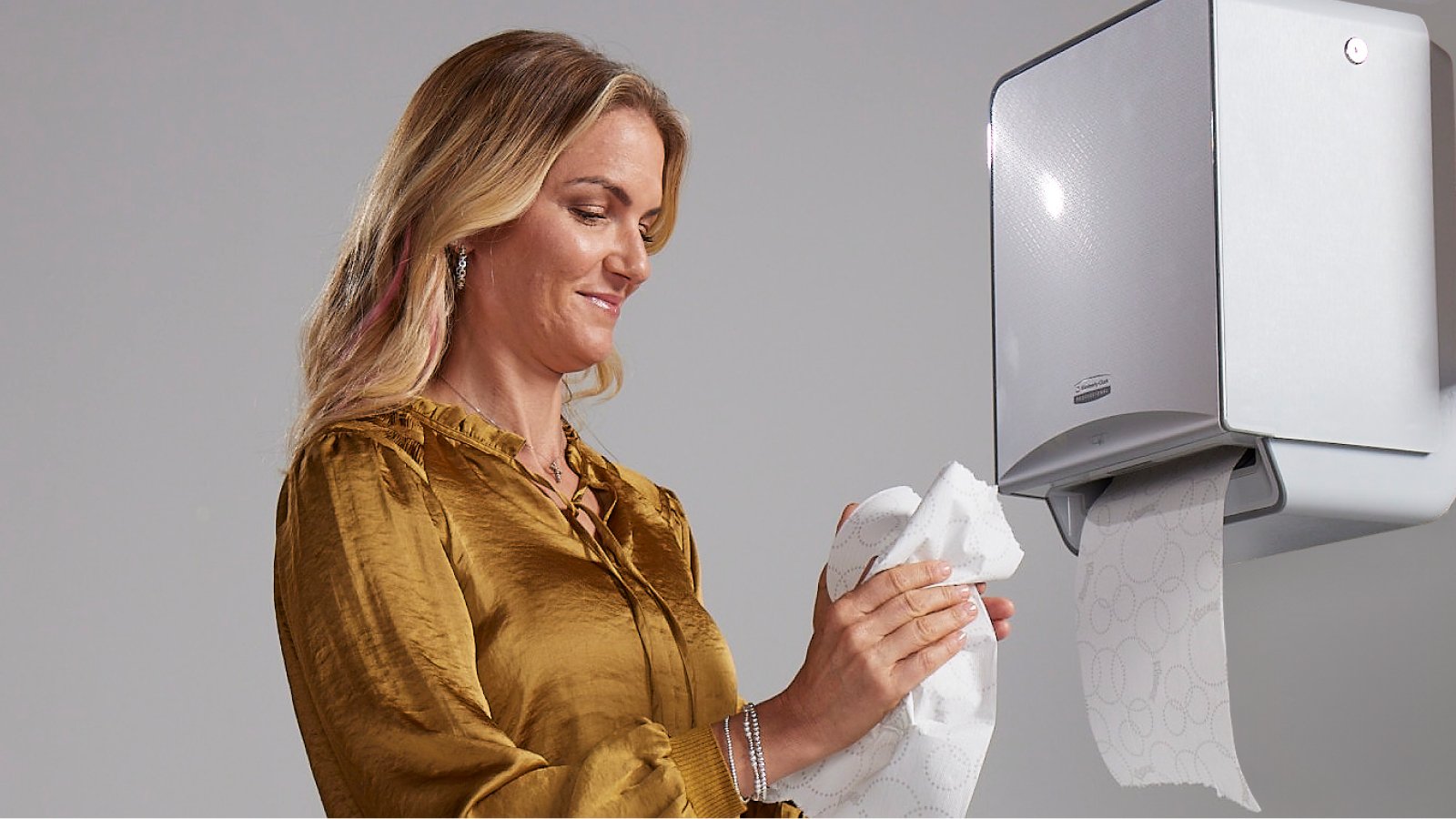Last Updated MAY 2022
Healthcare Germ Hot Spots
Creating a more hygienic health care facility doesn’t stop at the restroom. Targeting “hot spots” with hand and surface hygiene, is a key step toward reducing the spread of germs.

Placing hand sanitizer and signage in offices and common areas is a step in the right direction. But studies show it simply isn’t enough to make a real impact. Objects that are touched by lots of people throughout the day − such as doorknobs, elevator buttons and handrails − should be cleaned and disinfected daily in order to help break the chain of germ transmission.
No matter which surfaces they may touch throughout their day, give your staff, patients and visitors peace of mind by providing proven cleaning and disinfecting solutions to help break the chain of germ transmission.
Cleaning these hot spot areas will help reduce germs in healthcare facilities
- Doorknobs
- Elevator buttons
- Handrails
Cleaning removes germs, dirt, and impurities from surface objects. Cleaning works by using soap (or detergent) and water to physically remove germs from surfaces. This process does not necessarily kill germs, but by removing them, it lowers their numbers and the risk of spreading infection.
Disinfecting kills germs on surfaces or objects. Disinfecting works by using chemicals to kill germs on surfaces or objects.* This process does not necessarily clean dirty surfaces or remove germs, but by killing germs on a surface after cleaning, it can further lower the risk of spreading infection.
Hand Sanitizing kills germs on the body. The FDA regulates all topical antiseptic products such as hand sanitizers. These products are intended to be used when soap and water are not available and are not rinsed off with water.
Steps to make it easy to drive cleaning and hygiene habits
Step 1
Clean the surface of commonly touched objects — use detergent or soap and water prior to disinfection.
Step 2
Disinfect the surface — use EPA-registered household disinfectants. Follow manufacturer’s instructions for application and dwell time.
Did you know?
- In the span of 24 hours, the average adult touches 7,200 surfaces1 and touches their face 552 times.2
- Cotton towels reduced disinfectant strength by up to 85%.3
- Keyboards harbored 8,900 bacteria4 per keyboard.
- Mobile phones harbored 6,300 bacteria5 per phone.
- 67% of soak buckets tested harbored bacteria.6
- The average desk has 400 times more bacteria7 than a toilet seat.
- 93% of towels sampled contained live bacteria6 including
- E. coli
- Coliforms linked to feces
- Pneumonia associated bacteria
For more information on how to make your facility truly exceptional – a place where everyone feels equipped and empowered to contribute to a more hygienic environment, visit our hand and surface cleaning page.
Download Tips for Identifying Healthcare Germ Hot Spots (PDF)
*Non-Food Contact Surfaces
Source: https://www.cdc.gov/flu/school/cleaning.htm
1 Zhang, N., Li, Y. and Huang, H., 2018. Surface touch and its network growth in a graduate student office. Indoor air, 28(6), pp.963-972
2 A frequent habit that has implications for hand hygiene Kwok, Yen Lee Angela et al. 2015. American Journal of Infection Control, Volume 43, Issue 2, 112 – 114
3 "Decreased activity of commercially available disinfectants containing quaternary ammonium compounds when exposed to cotton towels," Charles Gerba, Ph.D, etal, American Journal of Infection Control, April, 2013, www.ajicjournal.org.
4 Bacterial contamination of shopping carts and approaches to control Gerba C.P., Maxwell S. (2012) Food Protection Trends, 32 (12) , pp. 747-749.
5 Martínez-Gonzáles, N.E., Solorzano-Ibarra, F., Cabrera-Díaz, E., Gutiérrez-González, P., Martínez-Chávez, L., Pérez-Montaño, J.A. and Martínez-Cárdenas, C., 2017. Microbial contamination on cell phones used by undergraduate students. Canadian Journal of Infection Control, 32(4).
6“Microbial contamination of hospital reusable cleaning towels,” Charles Gerba, Ph.D, etal, American Journal of Infection Control, March, 2013, WITH Engelbrecht K, D Ambrose, L Sifuentes, C Gerba, I Weart, DW Koenig. 2013. Decreased Germicidal Activity of Commercially Available
Disinfectants Containing Quaternary Ammonium Compounds when Exposed to Cotton Towels. American Journal of Infection Control. 41 (10), 908-911. Sifuentes LY, CP Gerba, I Weart, K Engelbrecht, and DW Koenig. 2013. Microbial Contamination of Hospital Reusable Cleaning Towels.
American Journal of Infection Control. 41 (10), 912-915.
7 U. of Arizona study by Gerba, C. 2002. First In-Office Study Dishes The Dirt on Desks




















